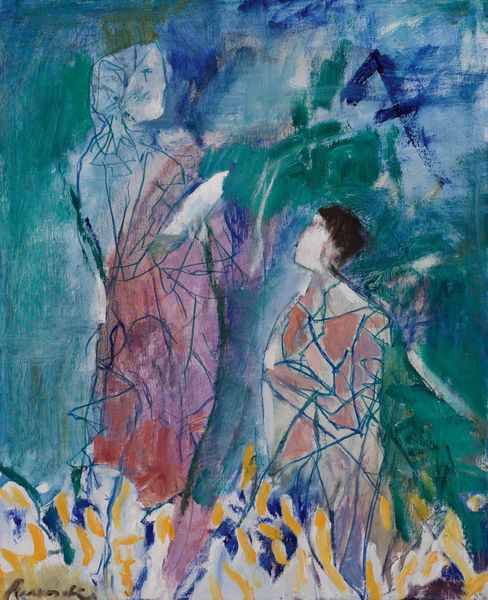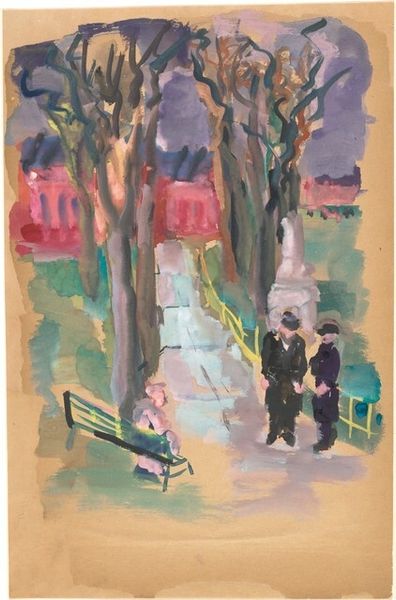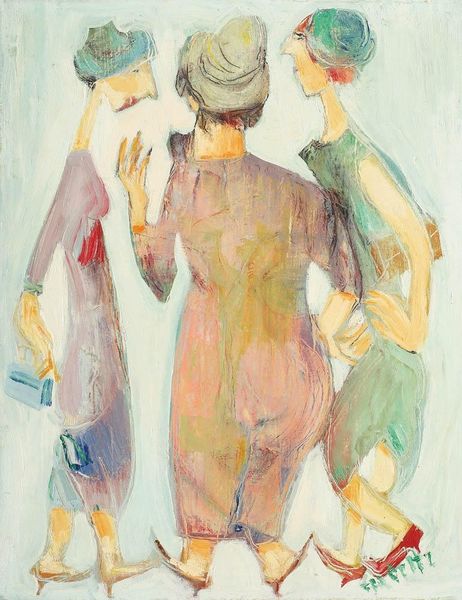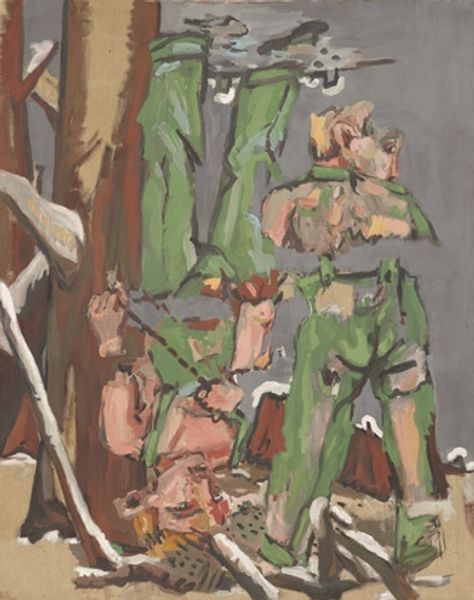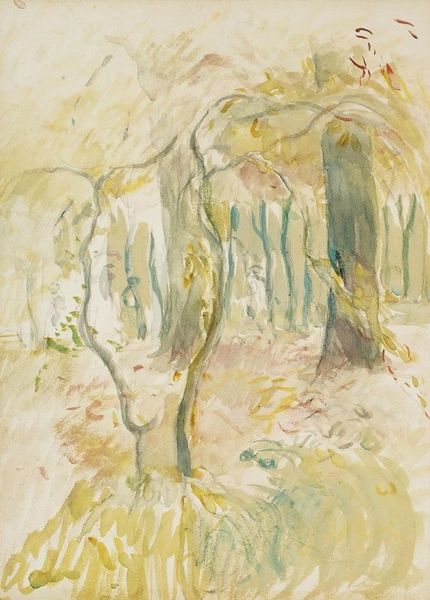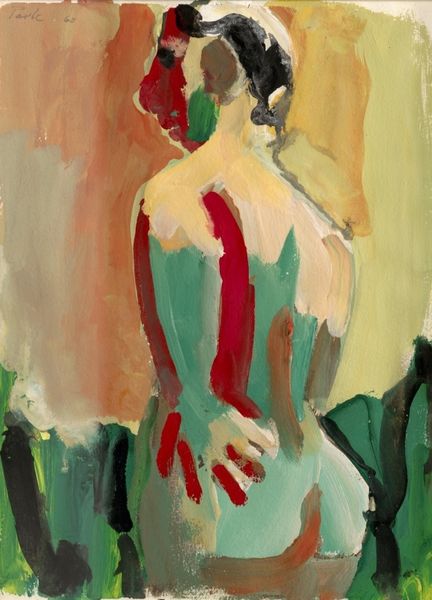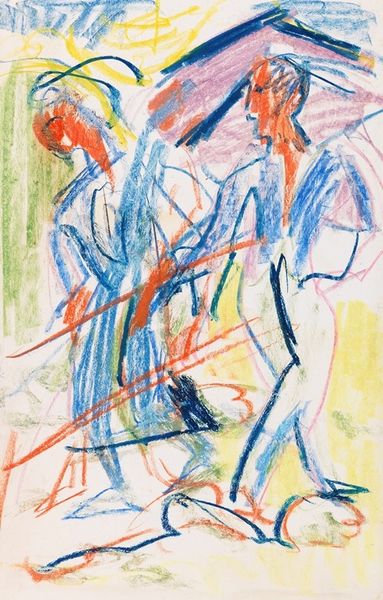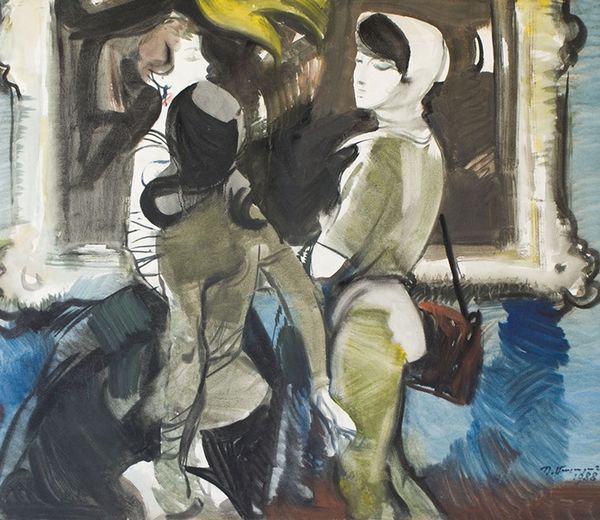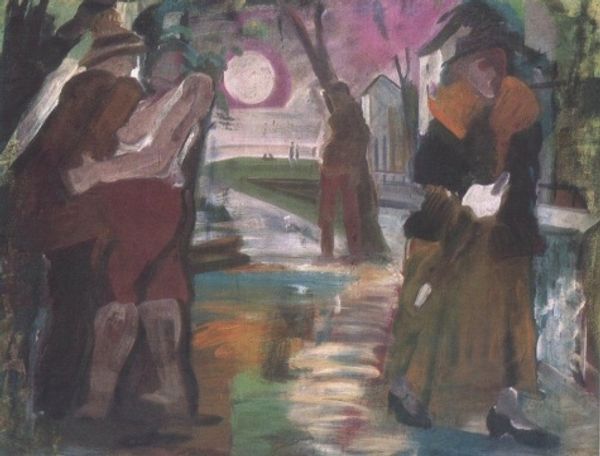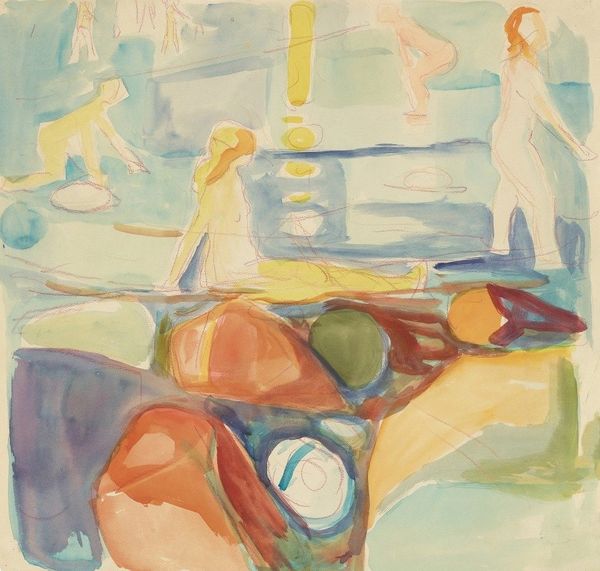
Copyright: Public Domain: Artvee
Curator: We're looking at "Paradis og hoppetau," or "Paradise and Jump Rope," an oil painting created by Jakob Weidemann in 1951. Editor: It’s dreamlike. Those pastel colors—pale blues, pinks, yellows—create an ethereal, almost unsettling atmosphere. And the figures, they're so roughly rendered. Curator: I agree about the figures; the simplification of form really stands out. Observe how Weidemann uses broad, visible brushstrokes. It's less about mimetic representation and more about the act of painting itself. The semi-abstracted landscape contributes to its modernist qualities, certainly. Editor: Paradise and a jump rope...It hints at a loss of innocence. Paradise, traditionally a space of purity and joy, juxtaposed with a children's game suggests perhaps a corrupted Eden, or an Eden about to be corrupted. Notice the figures—almost ghost-like. Curator: A very interesting interpretation. One could also analyze how the composition supports this. Note the arrangement of shapes: the repetition of circular forms—jump rope, the rounded foliage, almost bubble-like encircling the figures. It lends a sense of dynamism, almost as if time is both contained and fleeting. Editor: Exactly, but contained by what? A fading memory, a mythologized childhood. These two figures could easily symbolize something like innocence on the verge of a more brutal realization, no? The garden, too, is interesting as gardens so frequently embody idealized versions of nature under constraint. Curator: Yes, perhaps those restraints, manifested by color and form, are what contribute to that sensation you noted from the very beginning of the piece's feeling "unsettling." Weidemann manages to subtly combine thematic symbolism with formal expression, creating a compelling composition. Editor: Precisely, there’s a complex interplay between signifier and signified. The familiar symbols – Paradise, children – when seen through Weidemann's artistic choices invite such darker narratives, such new iconographic understanding. Curator: A stimulating perspective to be sure. It illustrates the ways that abstract expressionism, even in a figural piece, is rich in interpretive depth. Editor: Indeed. These objects invite reflection. Thanks to the artist, we get the gift of considering anew.
Comments
No comments
Be the first to comment and join the conversation on the ultimate creative platform.
